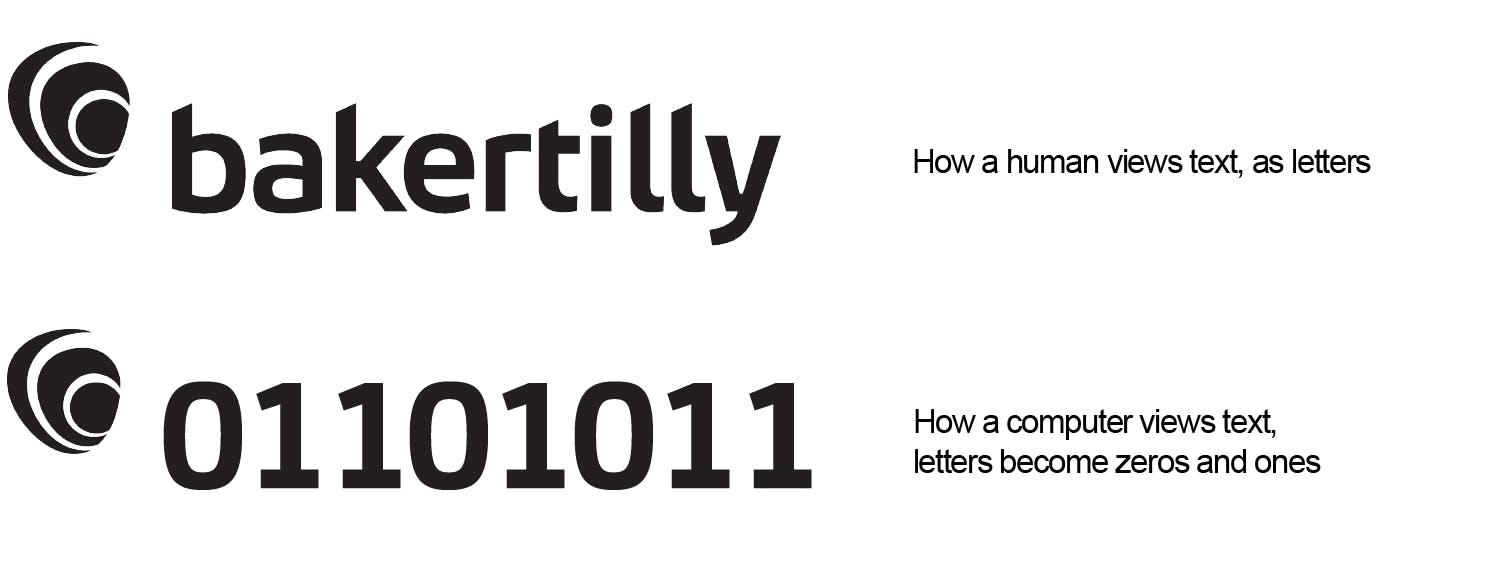NLP is a process for computers to learn language and perform in depth analysis of text along with generating new text.

Natural Language Processing for your business
Natural Language Processing is as broad a topic as words themselves, and as such, there are far too many use cases to cover in one article. This article is the first part in a series discussing the value of Natural Language Processing. Read part two here.
The importance of language is visible throughout every conversation, electronic communication, or written word you encounter in your day. Text analysis has long offered the ability to translate text into meaningful insights in easily formatted reports, such as word clouds and key word frequency. However, this kind of text analysis has no fundamental knowledge of language; it addresses text as if letters and words are numerically interchangeable. Given our digital environment, understanding the context of words is vitally important for businesses to operate on a daily basis. Leveraging natural language processing into business operations can help your organization grow in the current digital landscape.
What is Natural Language Processing?
NLP is a process for computers to learn language and perform in depth analysis of text along with generating new text. This field of artificial intelligence (AI) gives computers the ability to read and understand language, providing the opportunity for large-scale analysis, real time automation, and a variety of industry specific applications.
Why is NLP a big deal?
NLP begins to understand language and extract meaning. While humans are still better than computers at language, computers are far better at sorting through large volumes of data with speed and consistency.
Language is nuanced and complex. The same word can take on completely different meanings depending on the context. The complexity increases even more if the word does not translate well between languages. At a fundamental level, computers work only with numbers and are designed to be logical with limited contextual aspect, making it difficult for computers to learn language. Sometimes text can be converted to numbers to identify similar groupings of words, other times text has been painstakingly coded out to account for each unique use case. However, the last 2-3 years have produced incredible, fast moving improvements in the realm of computers understanding and processing language. Advancements in access to computational power have unlocked the ability to teach language to computers to the extent that some claim these models portray common sense[1].

Most notable in recent tools is Google’s open source release in November 2018 of the model Bidirectional Encoder Representation from Transformers (BERT)[2]. BERT is a neural network-based NLP tool that Google has built to understand phrases in its search engine. BERT finds meaning in language and contextually understands when different phrases are the same even if completely different words are used.
Early models attempting to address language could not understand the difference between the word “bank” in the phrases “Deposit the check at the bank” and “On the bank of the river”. Even more difficult are words like “to” and “for”, where the meaning of the word in a sentence can change drastically. Advancements in the availability of computational power in combination with novel techniques as found in BERT have recently provided models where the meaning of text can be understood.
How do businesses use NLP?
Every business needs to understand how its brand and products are perceived. Between direct customer reviews and indirect social media mentions, there is a lot of information out there. If the business is trying to increase brand awareness, assessing social media mentions of the business over time can provide insight into changes in brand awareness as well as the sentiment surrounding the brand. These techniques can be similarly applied to understand the broader market and the way the brand and products are perceived – allowing the business to increase strengths and reduce weaknesses based on this natural language processing informed market research.
Understanding trends in news articles provides key insights to the business
The most recent advancements in NLP provide summaries of entire articles that are so clear and accurate that the computer generated summaries cannot be distinguished from human generated summaries[3]. News articles provide valuable insights to market research, brand awareness, and competition analysis, and these insights can be gathered at scale with natural language processing techniques. Analysis of news articles requires a different technical approach to social media analysis and provides robust findings. Automation of this analysis ensures a high volume of data can be analyzed, successfully setting the stage for data driven strategic decisions.
Excellent customer service has always differentiated good businesses from great ones. Prior to implementing chat bots, customer service came at the costly price of human interaction. While there is always a time and place for the human touch, chatbots provide the opportunity to automate customer support at low cost. While we have all experienced frustration from a phone line chatbot, their value on websites and in virtual marketplaces is prevalent when examining customer service. Utilizing chatbots to support the sales process has delivered significant business value, increasing total sales and orders while maximizing ROI. Reaching new customers while improving retention, chatbots provide an improved customer experience where the results speak for themselves.
Natural language processing is at the forefront of new and exciting techniques in the realm of machine learning and AI. These techniques unlock a new level of understanding language through computers, allowing for a robust analysis on: the meaning of the language, enhancing a business’s customer service offerings and leveraging news articles and social media for business insights around product, brand, and market perception. Sifting through the vast amounts of data produced and implementing business solutions based on these insights can feel very daunting. Our professionals are knowledgeable and prepared to assist your business through an evaluation of your current NLP processes, an ideation session or helping you implement natural language processing into your organization.
